 Hello, gentle readers, and welcome to the Classic Reload, the monthly feature where we wander out into the snow to look for horses. Each month, we take a look at a classic game from the App Store’s past to see how it holds up in the here and now. It’s a chance to revisit old favorites, reflect on their place in the overall iOS library, or simply to take a deeper dive than our reviews typically allow. I try to pick a varied selection from month to month, but if there’s a game you’d really like to see featured, don’t be shy. You can let me know by posting a comment below. Since the schedule is planned well in advance, you might not see your suggested game soon, but it will be added to the master list for future consideration.
Hello, gentle readers, and welcome to the Classic Reload, the monthly feature where we wander out into the snow to look for horses. Each month, we take a look at a classic game from the App Store’s past to see how it holds up in the here and now. It’s a chance to revisit old favorites, reflect on their place in the overall iOS library, or simply to take a deeper dive than our reviews typically allow. I try to pick a varied selection from month to month, but if there’s a game you’d really like to see featured, don’t be shy. You can let me know by posting a comment below. Since the schedule is planned well in advance, you might not see your suggested game soon, but it will be added to the master list for future consideration.
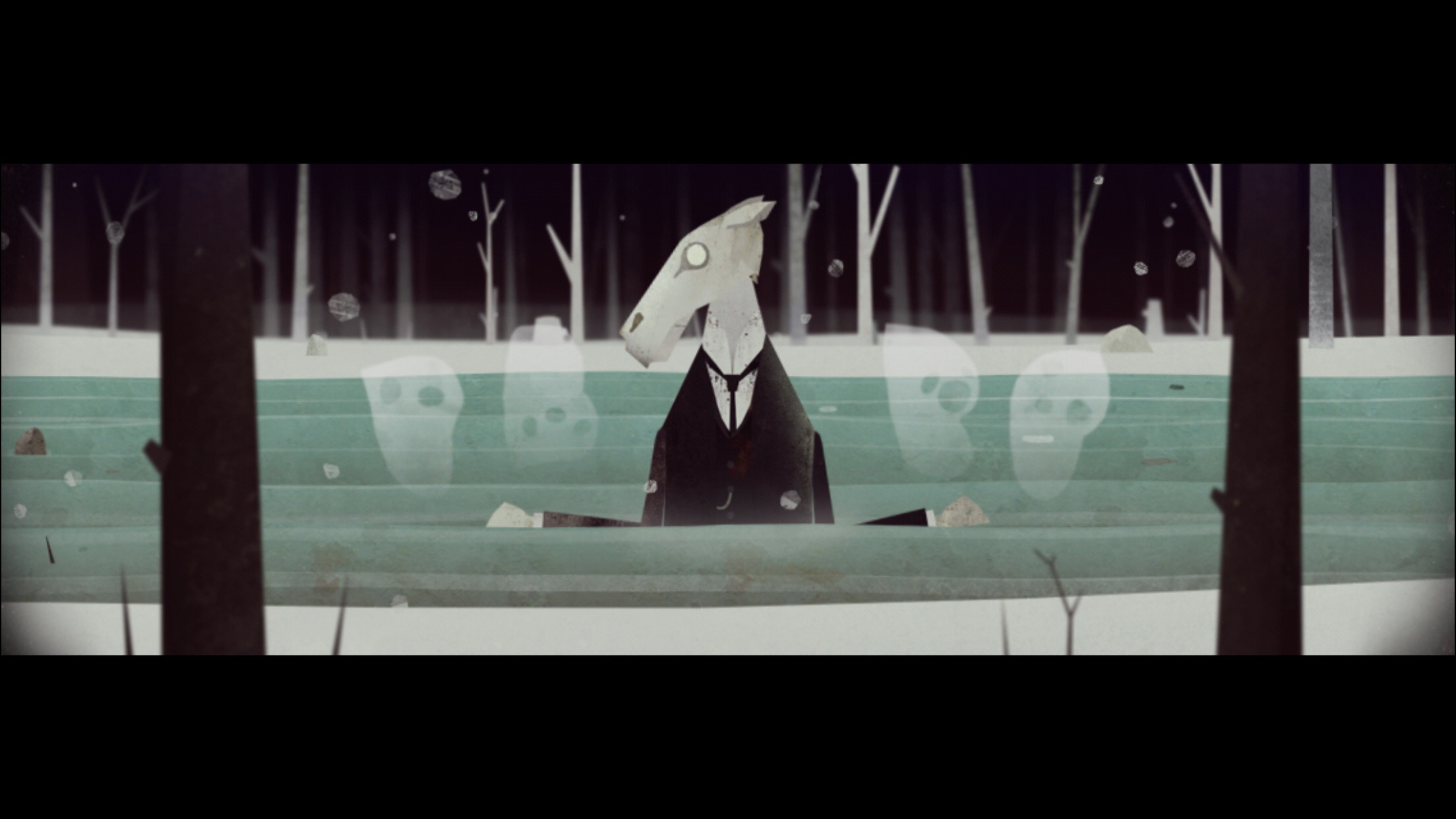
This month, we’re taking a look at another game that was under consideration for a Game of the Year award here at TouchArcade. It ultimately lost out to another game, but even making it into the runner-up category usually means a game is something special. Year Walk ($3.99) wasn’t the first game from Swedish developer Simogo, but in many ways it ended up defining the company’s image. It’s an unsettling, somewhat brief adventure game with some creative puzzles and a clever method of delivery. While it’s not considered a horror game, the general tone is spooky and it does contain a few jump scares. Simogo would further explore the boundaries of interactive fiction with subsequent titles, but Year Walk represents their first steps in that direction. I won’t say it’s their best take on it, but Year Walk is probably their most well-known title.
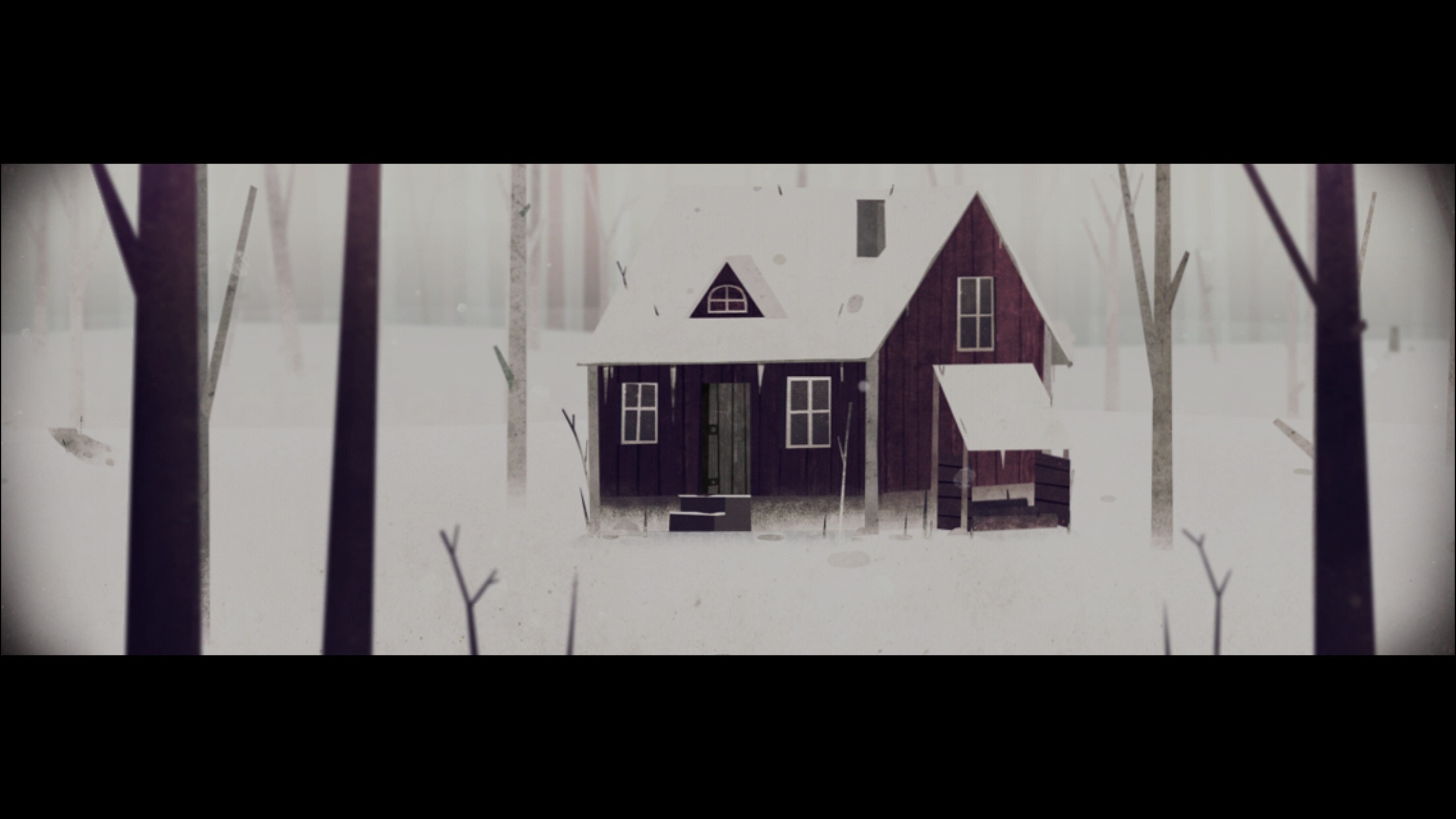
Based in Malmo, Sweden, Simogo is a developer founded by two men. Simon Flesser, who once worked in the animation field, joined up with Malmo-based game developer Southend Interactive in 2007. It was there that he met Magnus “Gordon" Gardeback. The two would eventually part ways with Southend in 2010 to form their own developer, Simogo. The developer released its first title in December of 2010. Kosmo Spin ($2.99) is a quirky little action game with lovely production values. It slipped under the radar of most media upon its release, but the game did enjoy a strong following in the TouchArcade forums. Their next two games, Bumpy Road ($2.99) and Beat Sneak Bandit ($2.99), were equally inventive arcade-style games that fortunately did not go unnoticed. With eyes finally upon them and a general pattern forming, Simogo did a very characteristic thing next: something unexpected.
In June of 2012, following the release of Beat Sneak Bandit, Simogo started teasing the game that would become Year Walk. Using QR codes and only the vaguest of hints, the development team hinted at a game connected with Swedish myths and horses. The game was officially announced in September of that year, with a release following in February of 2013. Before release, Simogo tried very hard not to reveal too much about the game. They wanted to preserve that feeling of mystery that games once had in the pre-Internet days. Fans went wild speculating on the game and trying to solve the riddles that Simogo had laid out, so it seems like it was a pretty good strategy.

The game released to generally high praise from critics and players alike. There were some criticisms about the game’s length, and it obviously didn’t play well with the crowd that don’t get on with “experience" games, but overall, people were quite pleased by its moody presentation and interesting puzzles. The game was released with a companion app called Year Walk Companion (Free) that gave a few hints, filled players in on the folk lore, and held a very special secret for those who finished the game. Year Walk went on to win a number of awards and ended up selling hundreds of thousands of copies across iOS, home computers, and the Wii U.
Year Walk is about two things, mainly. First, it’s a vehicle through which the creators can share some Swedish folk lore in a short, easily-digestible form. It’s also a story about love, though not a terribly happy one. Your character is engaging in a Year Walk, an ancient pagan ritual that supposedly allowed people to see glances of the future, albeit at a terrible cost. Those who wish to go on a Year Walk would typically deprive their senses and appetites for a day before marching into the snow-covered woods, with their ultimate goal being a church. On the way, they would apparently see visions of things, and the interpretation of such visions could reveal things to come. That’s essentially what happens in the game. You need to make for the church, but when you get there, the gate is locked. In looking for the key, you’ll come across some strange and sometimes horrifying sights.

What you won’t come across are other people. You’ll meet the love of your character’s life in the beginning, but after parting ways with her, you won’t see another living soul, save the supernatural, for the duration of your quest. The countryside is somewhat bewildering to try to chart a course through. Spatially, it appears to make little sense, and since you can only face forward, it’s easy to get lost. Landmarks abound, however, and once you get a feel for the layout, things get easier. But you are isolated, and the game uses that to press a somber, foreboding mood onto you. After recovering the key, you’ll find a few more puzzles waiting at the church. After you figure those out, you’ll be rewarded with an ending. Not the ending, mind you. That requires a little work involving the Companion app. There’s no real happy ending. Only a less bad one. But you’ll want that ending anyway.
To tell the truth, I’ve always had mixed feelings about Year Walk. There’s no question the story aspects are well done, and the presentation is excellent. I also admire its creativity, even if it doesn’t always make for the best gameplay experience. You need to think outside of the box often in Year Walk, and puzzles like that always present a risk. Of course, if the player manages to figure them out, the feeling of satisfaction and immersion is grand. On the other hand, if the player can’t solve them and perhaps resorts to a guide or a hint from another player, these creative puzzles can feel very frustrating. They can feel like they’re not playing by the rules, and the game doesn’t always give the player enough hints that such rule-breaking is possible.
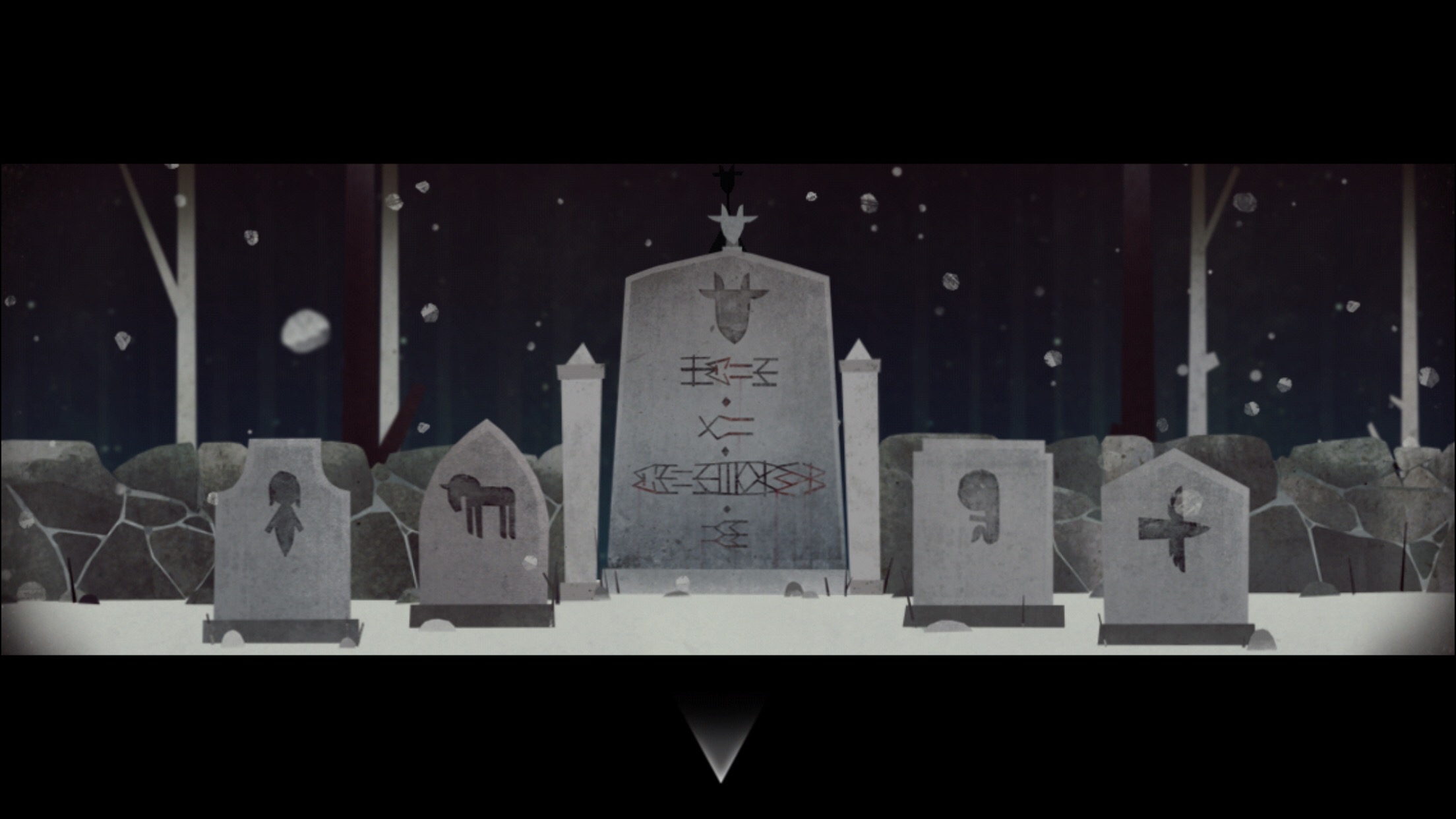
Mixed in with the creative puzzles are the sort of puzzle that requires you to either take a lot of random notes as you go, or do a lot of backtracking to collect that information when it’s needed. It’s often easier just to brute force the answers to certain puzzles if you haven’t been diligent about keeping track of the symbols you see scattered around, as traveling out to find the locations again often takes longer than just trying every combination. Now, Year Walk is hardly the only adventure game to indulge in these kinds of puzzles. But the amount of potential backtracking for the memorization puzzles is greater here, and it doesn’t really telegraph the off-beat puzzles as well as some other games do. I’ve certainly run into worse, and even the most frustrating of the bunch in Year Walk isn’t that bad, but I also can’t say that I particularly enjoyed the puzzles in this game so much as I tolerated them.
Backtracking is a general problem in Year Walk. Yes, I know, the game is explicitly about walking. But it means there’s a lot of downtime between the interesting bits, making for a game that feels padded even though it’s quite short. The key hunt is really just an excuse to force encounters with the mythical creatures that feature in the game, and I can’t help but feel that the game might have been better off with at least one more gate, so to speak. As it is, you find the locked gate, find the first creature with the key, then end up having to go to another creature for the key, and then finally deal with one more creature before you finally lay your hands on the item you were searching for. The church sequence is relatively short by comparison, so you really spend most of the game wandering around in the woods looking for a key to a gate you could probably just hop.

But perhaps that’s focusing too much on the trees at the expense of the forest. Or is it the forest at the expense of the trees? Year Walk is really good at the little details and the broadest picture of its plot, even if the mechanical incentive to push forward isn’t that great. The game does a fantastic job of setting you up with its unnerving atmosphere, and though it only harvests that anxiety a couple of times, the impact is strong. You’ll stop trusting the game at a certain point, but still feel like you have to get through it anyway. If you’re like me, you’ll end up holding your device out a little farther than you normally might, ready to angle the screen away or drop the thing at a moment’s notice. It’s tempting to pin that solely on the jump scares, but while they’re certainly effective, they’re only able to draw that reaction by carefully planting the seeds of dread in the player.
I also found it extremely interesting the way the game shunted things that might have broken the tension over to the Companion app. There isn’t a lot of content there to absorb at first blush, but if you get stuck, there are some pretty good hints to be gleaned from the descriptions found in it. You’ll also become more acquainted with the creatures you’ll end up meeting along the way. That horse in the suit that seems like a fairly decent fellow? Well, you might rethink that, along with what boon you do for him, after you read up. I’m not so sure it was a great idea to hide the secret to the true ending in there, but the text that spells out that secret was captivating and probably wouldn’t have fit very well in the main game.
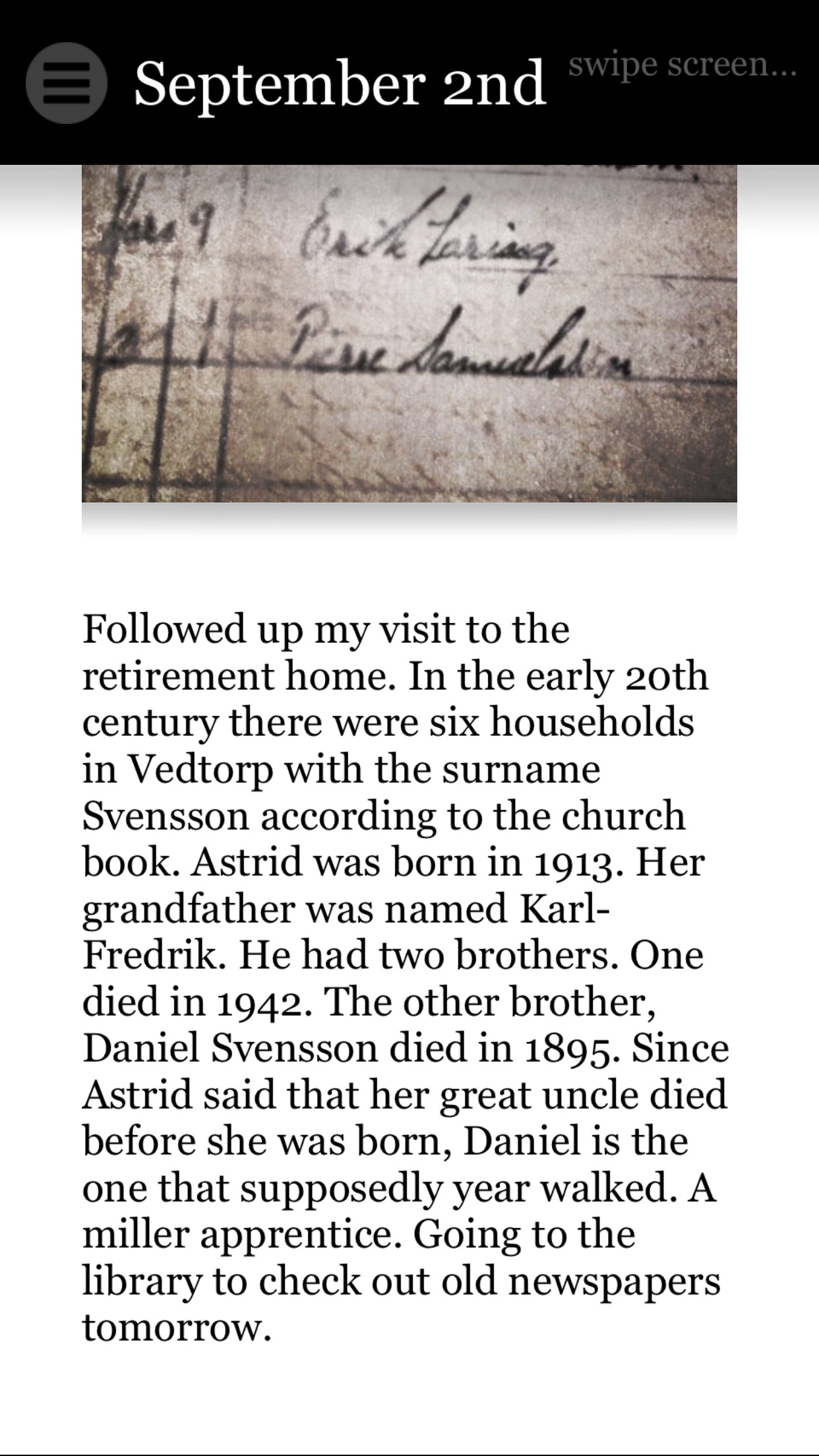
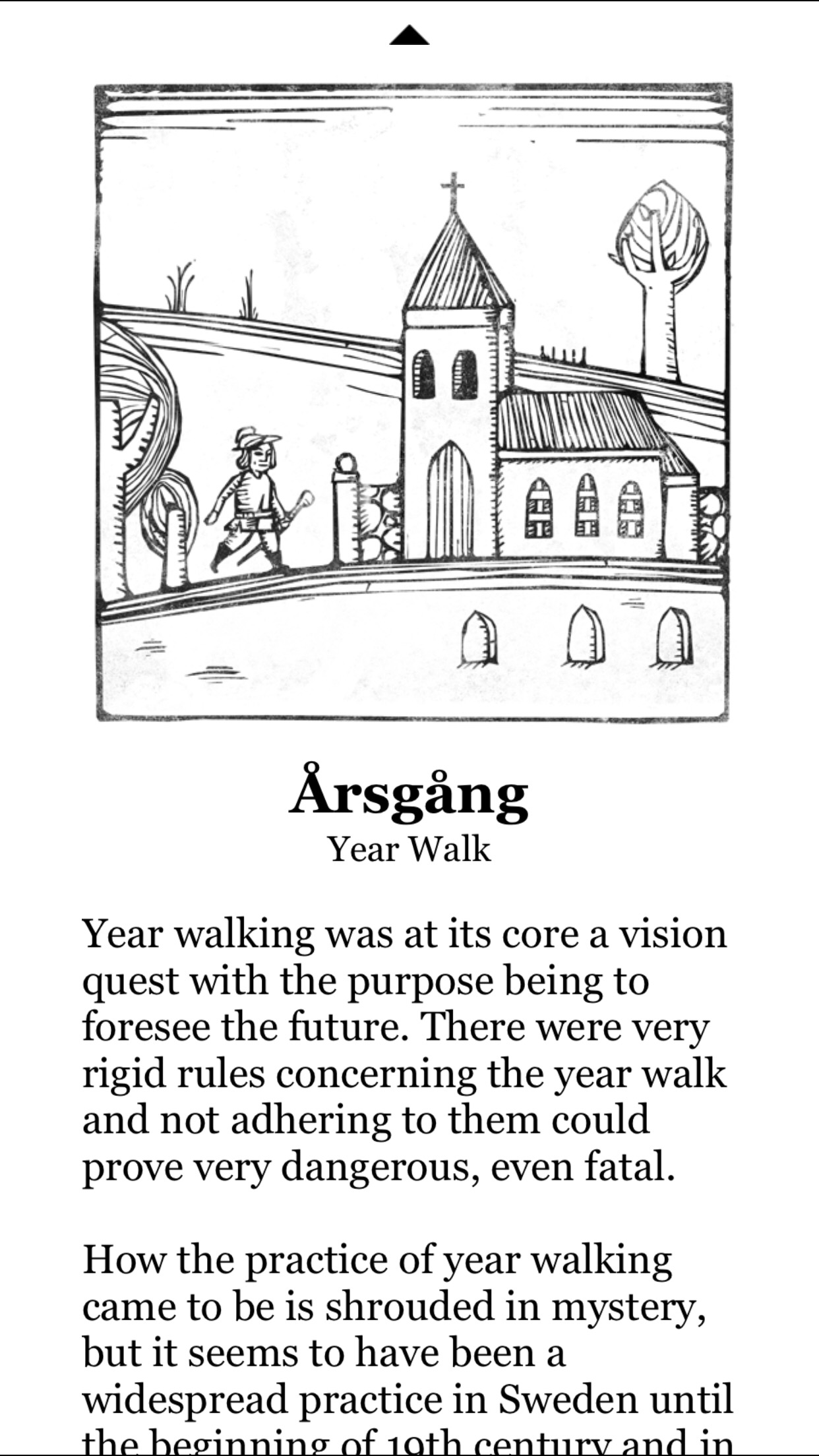
You might think with the game’s reliance on memorization puzzles, trick puzzles, and surprises, it wouldn’t make for a good replay. Sure, the mechanics don’t have much to offer on a second pass. But like any good story, knowing where it goes stokes the curiosity to try and spot the signs along the way. Certain things hold greater meaning in light of the ending, and running through a second time allows you to focus on the little details that you might not have noticed on the initial run. And with the game barely taking more than an hour to zip through once you know the answers, it’s hardly a burden to play again. I don’t know that I’d play it more than a few times, but I could see firing it up now and then just to experience the story and atmosphere again.
The last update for the main Year Walk app was done in 2013, so at the moment, the game is not 64-bit ready. I can’t imagine that Simogo will let the game go, though, so we should see an update for it before the much-rumored 32-bit Appocalypse hits. Funnily enough, the Companion app was updated in September of 2015, so it is 64-bit ready. Both still run fine on the latest versions of iOS, so I imagine that Simogo just needs to give the main app a little nip and tuck to make it ready for the future.
That’s my take on Year Walk. What do you all think? As usual, please post your comments, experiences, and other opinions down below. I know the love for this game is strong, and while my enjoyment perhaps didn’t match that of the majority, I’m still interested in hearing from those who may have gotten more or less out of the game than I did. Oh, and a gentle reminder that the May RPG Reload Play-Along of Star Wars: Knights of the Old Republic is still trucking along in the forums. Make sure to stop by the thread and join in. As for me, I’ll be back next week with another RPG Reload Glossary entry. Thanks for reading!
Next Week’s Reload: The Glossary Returns!
